The tenderness of the Iron Han of Infrastructure: Leave the Life Corridor in Nature Home -Wild Animal Channel
Author:Shaanxi Science and Technology Time:2022.07.12
Source: Science Popularization China
With the continuous development of human civilization, railways and highways have become an indispensable guarantee for population flow and economic development, and can be called the "blood" of the development of human society. While the traffic network is continuously improved, a series of negative ecological impacts brought by road construction are attracting more and more attention.
What are the impact of road construction on wild animals?
The slogan that is well -known in China has become a slogan in China, which has become a true portrayal of China's road construction and economic development since the founding of New China. According to statistics, as of the end of 2020, the national railway mileage reached 146,000 kilometers, of which the high -speed rail had reached 38,000 kilometers, and the total mileage across the country had exceeded 5 million kilometers, of which the highway mileage was nearly 150,000 kilometers. Due to terrain restrictions and traffic needs, many roads and railways need to cross wild animal habitats. The four -way road network divides the homeland where wild animals depend on survival. The construction and operations of these roads are divided into small areas needed to be divided into small areas, thereby destroying the places of the animal habitat, growth, reproduction and activity. It constitutes a different degree of influence.
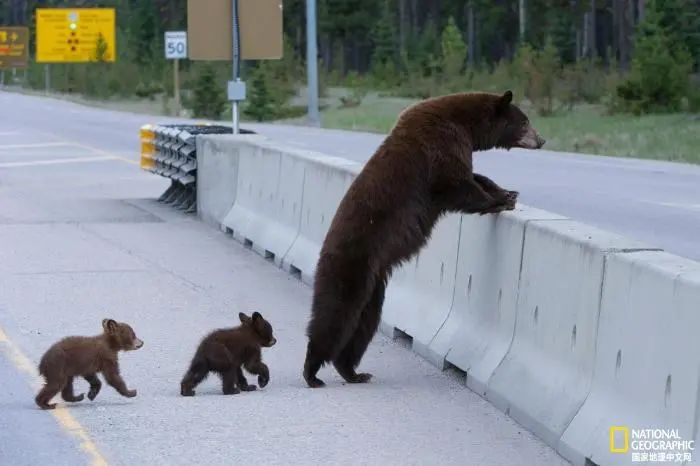
Figure 1 The brown bears that over the highway forage
The radius of the survival activity of large mammals is often dozens of or even hundreds of square kilometers. The fragmented habitat cannot meet the basic needs of their survival.
The most direct impact of vehicles on the road on wild animals is the death of wild animals caused by collisions. According to incomplete statistics, in the past 30 years, as one of the most developed countries in highway construction, the number of animals (including birds) caused by vehicle impacts every year has exceeded one million. Globally, the number of animal casualties caused by the collision of cars, trains and wild animals has exceeded illegal hunting, and even a serious threat to the maintenance of some endangered animals. In addition to the significant impact of medium and large mammals with higher attention, closed roads and high -speed vehicles, for those who move slowly and have seasonal migration characteristics, are almost irreplaceable heavenly crickets. It has also caused these species that we are usually ignored.
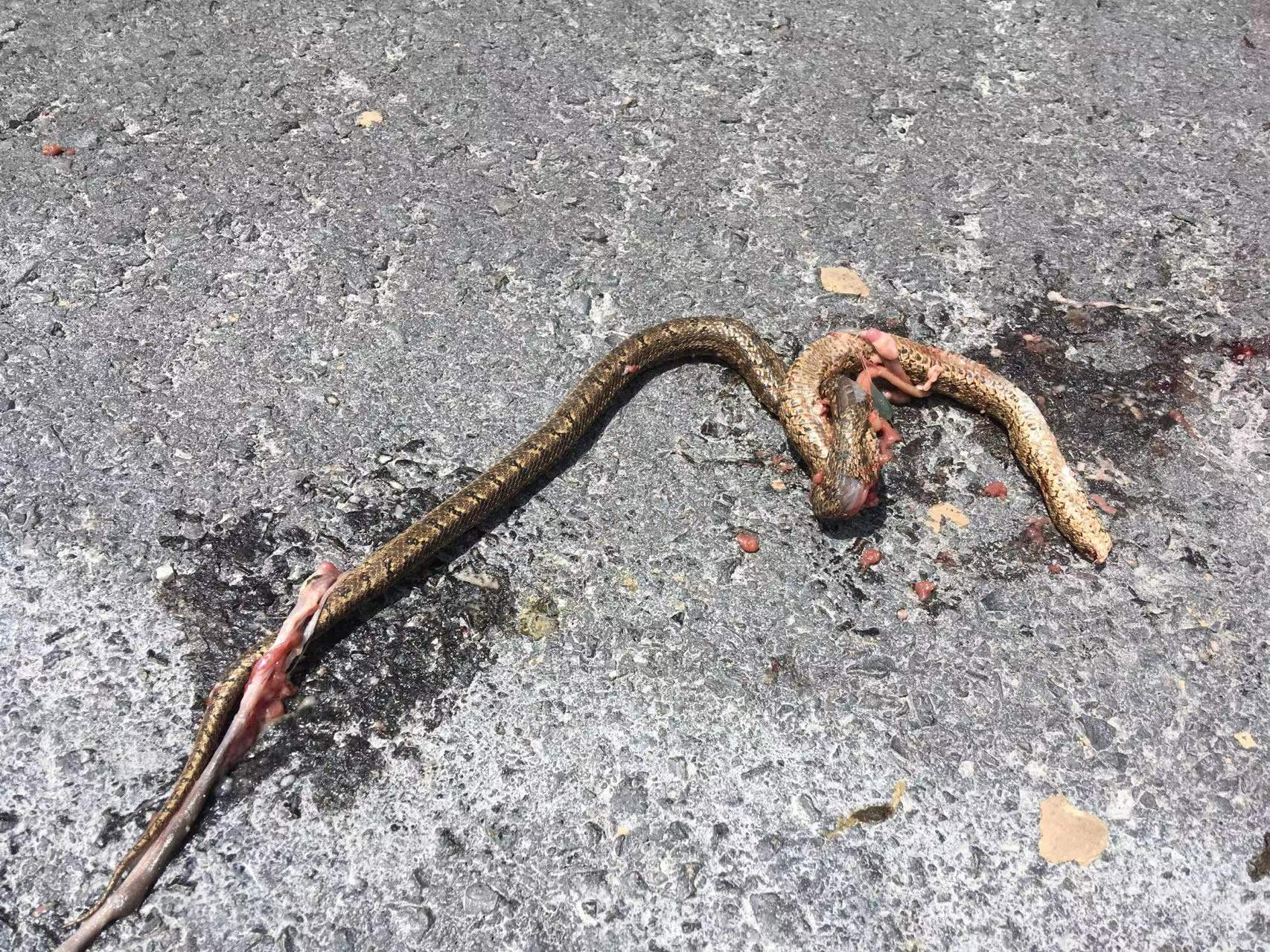

Figure 2 A neck tank traveling across the highway was crushed to death by the car. A weasel was killed by the later vehicle to take a risk to take a risk of eating this dead snake.
In addition to vehicle impacts, noise pollution and light pollution are also the main aspects of railway and highway operations on the habitat of wild animals. The noise generated when the vehicle passes will scare wild animals in the surrounding life, and drives them away from the railway or migrate to him, thereby further compressing the activity space of the population. At the same time, the lights of the vehicle at night will also interfere with the foraging and migration activities of night -line animals. According to statistics, the current 83%of the country's land area and 50%of Europe's land area are 1 km and 1.5 kilometers on the road side. The impact of vehicle activities on local wild animals has been significant.

Figure 3 The Qinling Antelope during the estrus period try to find a spouse to try to cross the 108 National Highway (the author was taken in the French Nature Reserve in Foring, Shaanxi)
The construction and operation of the railway and highway construction and operation of wild animals are long -term and continuous. Animals caused by impact reduction have reduced the number of populations, regional barriers and noise (light) pollution limits their diffusion and migration, and affect wildlife Genomey genetic exchanges and survival. The resulting long -term effect is to reduce the genetic diversity of species and threaten the survivability of various species in the region and the balance of ecosystems. It is expected that by 2050, the global highway mileage will increase at least 25 million kilometers, and it is mainly located in developing countries with rich biodiversity (such as Africa, South America, and Southeast Asia). In the future, the road traffic construction of these countries will directly affect the abundance of global biodiversity in the region and the world. The ecological effects and environmental impacts that have caused have attracted widespread attention from the international community.

Figure 4 The vast majority of the key areas of 34 land ecosystems in the world determined by the United Nations in 2007 are located in developing countries, of which China accounts for 14
The dead sheep make up for the time, and the wild animal passage came into being
Since the 1950s, Europe has been paying attention to the impact of roads and railways on wildlife groups and corresponding relief measures. By the 1970s, the United States, Canada and other countries successively formulated relevant regulations and policies, incorporated environmental impact assessment and wild animal channel design into conventional highways and road construction through national parks. So far, thousands of animal channels have been distributed around the world, mostly Europe, North America and Australia. Since the beginning of this century, my country's road construction and environmental protection departments have also begun to pay attention to the construction of wild animal channels. In 2004, the Henan Zhumadian -Xinyang Expressway, which passed the Dongzhai National Nature Reserve, is the first highway in China to set up wild animal channels in China. The Qinghai -Tibet Railway, which was opened to traffic in 2006, has attracted worldwide attention with its highest altitude, huge construction difficulty in construction, and unique ecosystems in the ecosystem. It has also become the first railway engineering specifically for wildlife migration design channels. In 2012, my country promulgated the first regulations for wild animal channels, "Technical Regulations for Design of Land Wildlife Corridor Design", and put forward specific requirements for wildlife channels. Since then, wild animal channels have been widely used in China's transportation network construction. Not only in China, as a well -known "infrastructure madness", in recent years, China has also used wild animal channels to set up wild animal channels in highways and railway projects around the world. And protect the global biodiversity!
Figure 5 The Mongolian Railway created by China Road and Bridge Group, according to the activity habits of animals such as elephants, giraffes and other animals, set up special wild animal channels in Crossing Penalian Cawo National Park section.
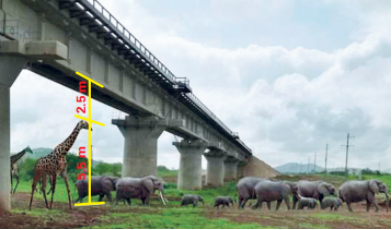
According to the living habits of wild animals, the main types of animal channels include upper channels, lower channels, and tunnels. The upper channel is mainly a small bridge specially passed by animals through the woods above the mountains and other mountain bags above the mountains, or artificially built the road embankment on both sides; Taking into account the functions of engineering and animal channels, there are also examples of the bridge culverts set by animals through specially set up; tunnels are also a form of protecting animals, but its starting point is mainly to prevent animal habitats. Pass. It is worth noting that at first the forms of these channels are mainly based on engineering needs, and have the functions of animal channels. They did not use the connectivity of animal communities as the main consideration of the establishment of a bridge culvert. In recent years, many countries have gradually begun to consider designing and building various types of special channels such as bridge culverts, ropeways, and dark canals for the living characteristics of specific types of wild animals.
Is it good to build a wild animal passage?
Wildlife channels are not just designing a channel for animals to pass through in the process of road engineering construction. The key is how to effectively use wildlife after completion.
The migration of wild animals is regular. Therefore, the key to the setting of animal channels is to find the path of migration and migration of wildlife along the line and find a relatively concentrated area of wildlife distribution. Therefore, through a large number of long -term observation data, you must learn more about the community distribution, population size, breeding foraging habits, common animal corridors and migration routes of wild animals along the line. At the same time, it is necessary to investigate the main factors that affect the distribution of wild animals such as vegetation, water sources and terrain landforms. After the channel is completed, it is necessary to continue to monitor the situation of wildlife use channels. Through the analysis and evaluation of monitoring data, we will take corresponding measures to continue to maintain and transform the channel.
A large number of successful wildlife channels are built along the Panjia Highway in Banff National Park in Canada, providing an important scientific basis for the construction of global wild channel construction. The key to success is the full research of the early site selection and the continuous monitoring pictures of the later operation. Cited from National Geographical Magazine
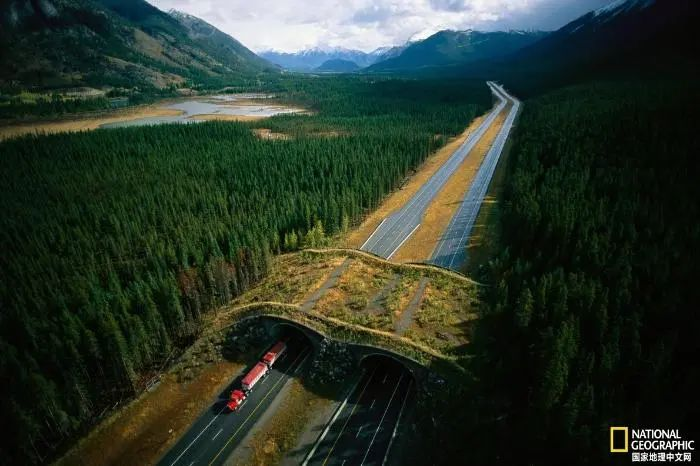
The reason for long -term continuous monitoring is that different types of wild animals have different ability to adapt to channels. A large number of studies have shown that the awareness of the channels of wild animals from "what is this" to "what can be done" and then the first step to bravely take the average of 3-5 years. Adaptation time is closely related to the living habits of animals. Often timid and suspicious animals (such as foxes, wolves, etc.) need longer time to adapt.
What should I do in the water and the sky?
In addition to the animal passage on the road, the fishway in the water conservancy and hydropower engineering is also very important. Water conservancy facilities such as dams will cause rivers and rivers, changing the hydrological conditions of the upstream and downstream, which will affect the fish travel and reproduction of the fish. To this end, scientists and engineers have worked together and designed fish roads dedicated to fish. Fish Road first appeared in France. In 1662, Bayeh provinces in southwestern France requested that the channels for building fish to build fish on the weir and dams were promulgated. By the late 20th century, North America had nearly 400 fish roads, and Japan had more than 1,000. After entering the 21st century, my country also began to establish a large number of fish roads to protect water species. Representatives include the fishway in Chaohu, Beijing Shangzhuang, Xinzhuang, Beijing, Tibet Shiquan River Fish Road, Qinghai Lake Liusha River Fish Road, etc. These fish roads have played an important role in the protection of local fish resources.
In addition, the protection of birds in road engineering construction in recent years has also been valued. The Hanzhong Basin is a must -have place for the Xicheng high -speed rail. This is also an important habitat for the national first -level protection animal Zhu Xi. Once the flying Zhu Xi hit the high -speed rail, not only did Zhu Xi die, but also a great hidden danger for the safety of high -speed rail. To this end, Researcher Wu Xiaomin (Shaanxi Provincial Animal Research Institute), who has hosted the Tibetan antelope passage of the Qinghai -Tibet Railway Tibetan antelope passage, designed a unique solution: special protective nets on both sides of the 16 kilometers along the 16 kilometers passing through the Zhu Xi Reserve, and the high -speed rail in this area is here. It is also passed in the form of a viaduct. The large bridge hole is set below, not only birds, but other animals can also pass freely. Zhu Xi Protection Network of the Xicheng High Speed Rail became the first innovative practice picture of special protection for bird protection and installation of special protection in the construction of high -speed rail construction.
The road is long and far away. The traffic engineering setting wildlife channels have played an increasingly important role in meeting the space needs of animals, ensuring the safety of animals, and maintaining the continuity of habitat. We must continue to work hard to develop animal channel construction in the direction of standardization and scientificization and achieve the goal of harmonious symbiosis of nature and nature.
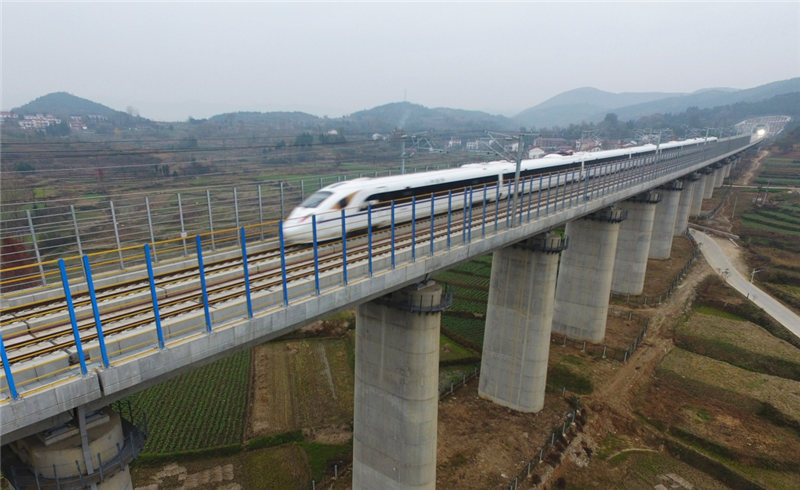
- END -
New Yellow River Figure | @新 新 新: Good guest Shandong issues Nishan Declaration

New Yellow River Reporter: Wang YanEdit: Weekend
Harbin Institute of Physical Education signed a contract with Shangzhi City for co -construction | Help to create a "capital of ice and snow cultural"

Recently, in order to help build the Capital of Ice and Snow Culture, Harbin Insti...